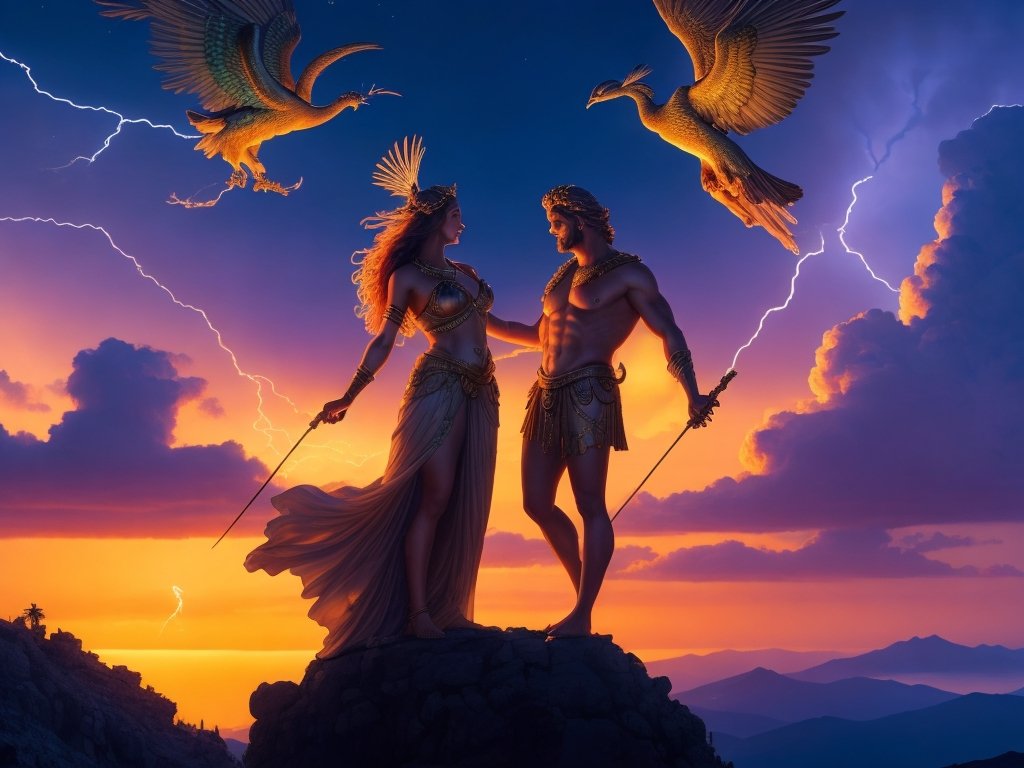High above the world of mortals, atop the majestic Mount Olympus, Zeus, the mighty god of thunder, ruled supreme. His eyes gleamed with the power of lightning, and he bore a golden crown as radiant as the sun itself.
In the lush gardens of an ornate palace, Hera, the queen of the gods, strolled among her beloved peacocks. She was the epitome of grace and beauty, her dark eyes shimmering with wisdom and kindness. Her long, flowing gown fluttered with each gentle breeze, making her look like a divine vision.
Upon seeing Hera, Zeus was smitten. From his heavenly vantage point, he watched her with fascination, a hint of longing in his eyes. The sight of Hera, radiant and full of life, stirred feelings within Zeus that he had never known.
Wanting to court Hera but not scare her with his divine form, Zeus transformed himself into a cuckoo bird. He flew down to the garden and perched delicately on Hera’s outstretched hand. Their eyes met in a gaze full of understanding and affection, and in that moment, a divine love story began to unfold.
Having won Hera’s trust, Zeus revealed his true form to her. He stood tall and mighty before her, yet his gaze was soft and filled with love. He reached out to Hera, their hands clasping in a show of mutual acceptance and affection. It was a pivotal moment in their divine love story.
Finally, Zeus and Hera were united in marriage, their love story culminating in a grand celestial celebration. They stood together on Mount Olympus, hand in hand, overlooking the world below. As the sun set, casting a warm glow over them, they began their reign as the king and queen of the gods.
Their love story, while filled with ups and downs, is a reminder of the powerful bond that love can create. It shows us that even among the gods, the heart yearns for connection and companionship. Today, every thunderclap and every peacock’s cry is a testament to Zeus and Hera’s enduring love.
Their love story is eternal, remembered and retold through the ages. The silhouette of Zeus and Hera, etched into stone, serves as a reminder of their love, echoing through the centuries. It’s a story that intertwines power and love, showcasing the unbreakable bond between the king and queen of the gods.
